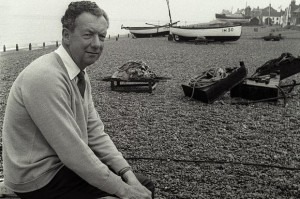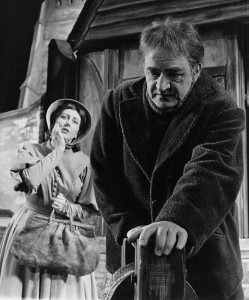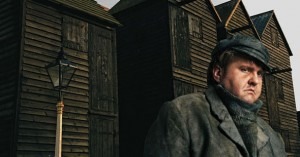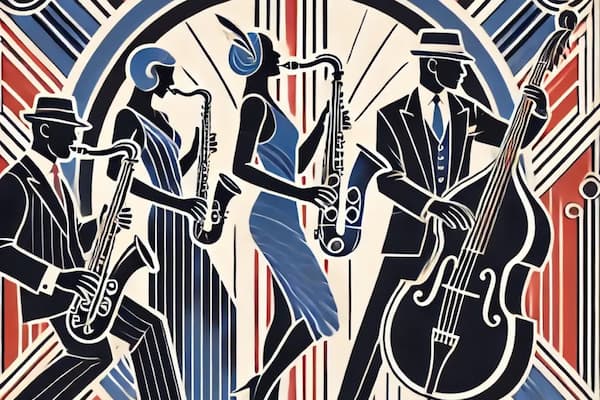
Benjamin Britten on the shingle at Aldeburgh, fishing boats behind him.
The most interesting sections in the opera are when the singing falls silent and the sea has its voice. In the opera, there are six Interludes, intended as scene changes. Britten took four of these, re-ordered them, and made some revisions so they could stand alone and created the Four Sea Interludes.

Peter Pears as Peter Grimes (1963)

Anthony Dean Griffey as Peter Grimes (2008)
Britten: 4 Sea Interludes, Op. 33a: No. 1. Dawn (Royal Liverpool Philharmonic Orchestra; Libor Pešek, cond.)
The second Sea Interlude forms the prelude to the second act. It’s Sunday and there’s sunshine, birds sing, and the village attends church in a vast air of self-righteousness. Yet, behind it, there’s still an air of unease and foreboding.

Britten at sea with the fishermen.
The third Sea Interlude, Moonlight, comes before the third act, takes a night setting. All is calm, all is dark, and you can imagine the play of the light of the moon on the water. The water takes on an almost oily sheen as it quietly moves in the dim light. We’re never resolved, however, as the chordal structure leaves us with a sense of instability. At the end, though, sharp thoughts intrude, building us up to the fourth Sea Interlude.
No. 3. Moonlight
The last of the Sea Interludes, Storm, is actually in the opera in the first act, between scenes 1 and 2. At that point in the opera, the music of the storm is reflecting the storm within the central character: determined to do good to gain a place in society, he also wants to hold his own opinions and beliefs about his life. These are the central points that lead to his destruction. His love/hate relationship with society leads him into actions that his village will not understand or tolerate and leads to his suicide. Coming at the end of the Four Sea Interludes the turmoil in the movement shows you Peter Grimes as a character: ambitious yet self-destructive – rather like a storm.
No. 4. Storm
The Sea Interludes show us many different sides of the sea and the many facets of our ultimately doomed main character.


